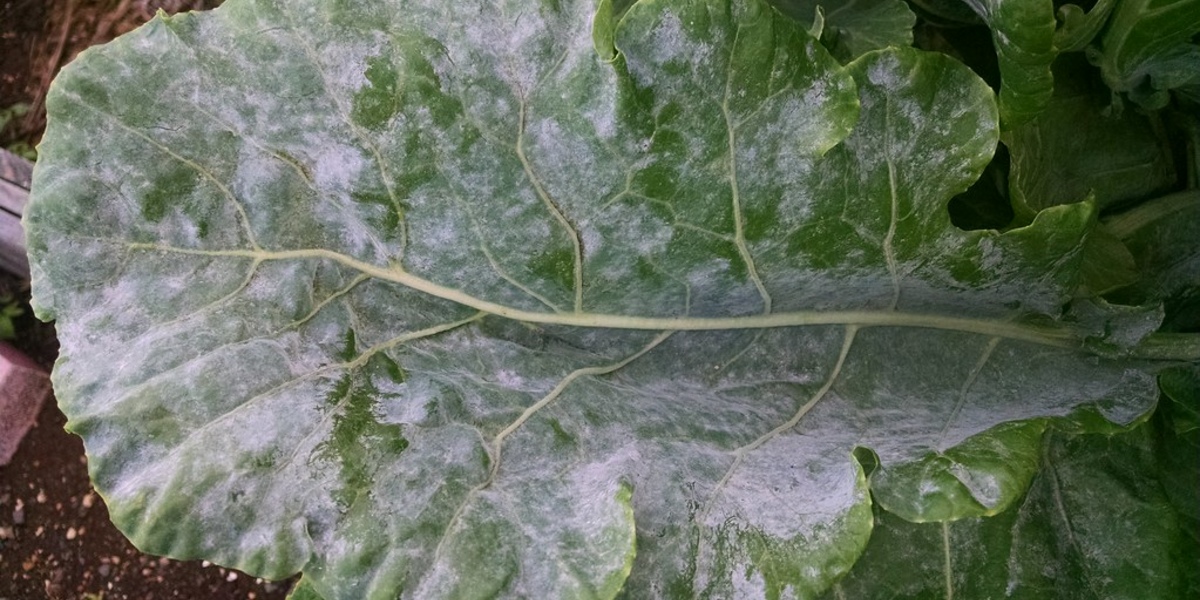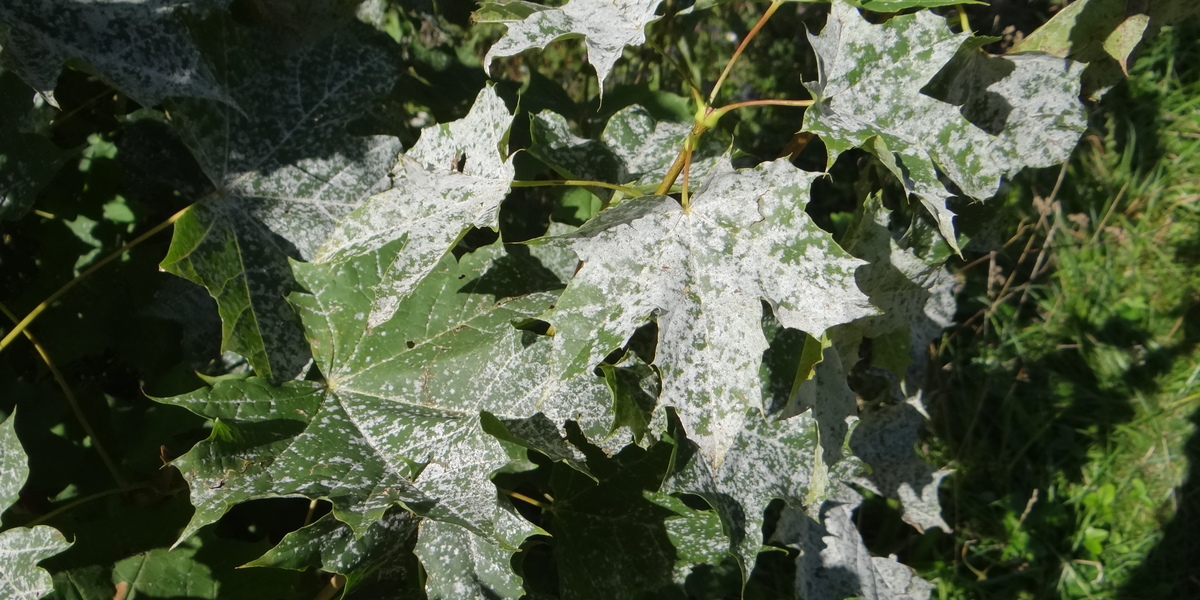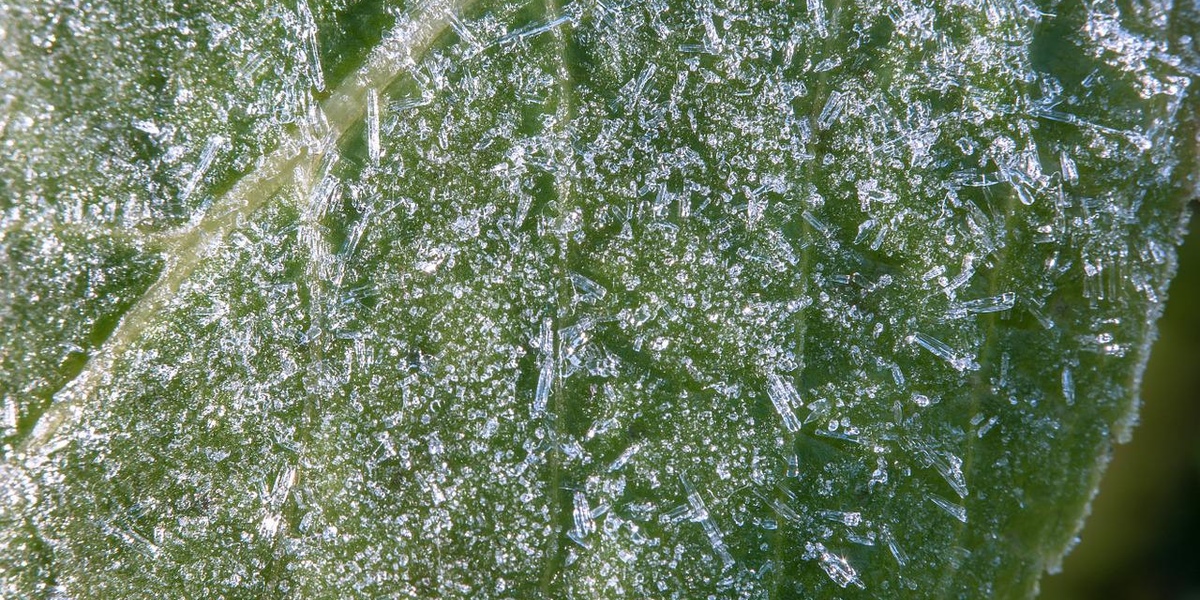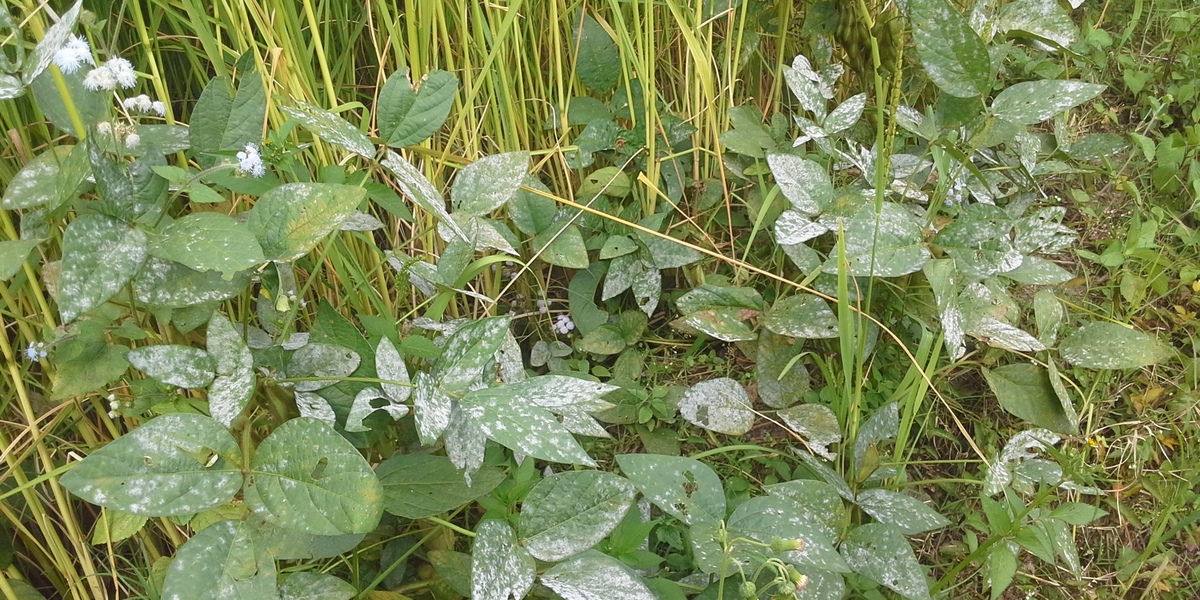Powdery mildew is a disease you can easily notice on your plants. You will not miss the powdery tinct on the leaves or stems. Powdery mildew pathogen attacks a wide range of plants, including houseplants. It quickly spreads from lower leaves to the flowers. This disease is one of the most common in the US. It attacks flowers, bushes, crops, and even trees.
There are no 100 percent resistant plants to this pathogen, except several hybrids. Some plants are just more susceptible, like roses, lilacs, or zinnias. Yet, the fungi can attack them as well, especially in the high level of humidity area. The temperature of 70-80F during the day is beneficial for fungi. To fight the disease, you have to learn as much as possible about it.
Detailed Information on Powdery Mildew
Before we talk about treating powdery mildew on plants, let’s find out more about this disease. Powdery mildew is a fungal illness. It affects stems, foliage, and flowers. On the fruit trees, it can also affect fruits. The fungi cover the plant with white spots.

The fungi provide the air-borne spores that attack the plant. The spores can easily prosper in high humidity and prefer to stay in an environment with an increased level of water. In the perfect environment, the pathogen can spread and produce numerous spores. The best target is the plant that grows in the area with the lack of airflow, the so-called stagnant air condition. It attacks from the lower leaves.
Meanwhile, winter is a period of inactivity for mildew spores. The pathogen can survive the season on a wide range of green tissues, like houseplants or fallen leaves. The spores will be released back in spring when powdery mildew during flower blooming will be the most active.
This disease spreads on numerous garden plants, including marrows, crucifiers, cucumbers, apples, gooseberries, blackcurrants, and even grapes. Cereal crops are under the constant threat of powdery mildew. It attacks houseplants as well. Powdery mildew has different types that attack specific species of plants.
Powdery Mildew Species
There are numerous types of pathogens that lead to powdery mildew disease that we see on plants. All of them have fungal characters. The most spread species around the US:
- Uncinula is similar to Erysiphe. This pathogen attacks grapes. Scientists believe that this fungus appeared in North America in the first place. Most European plants can be sustainable to the pathogen. This disease covers the grapes and leaves;
- Erysiphe is the pathogen responsible for mildew on squash, pumpkin, cucumber, and melon. It attacks the family of cucurbits. The major symptoms that appear are white spots that appear on stems and leaves and look like the powder;
- Phyllactinia is also known as the white powdery mildew of the hardwood trees. This powdery mildew on houseplants is spread as well. For example, you may notice it on lilac. You can find the pathogen in Western North America, as well as around the world;
- Microsphaera is the pathogen that infects soybeans mainly. It is a popular threat to the soybean harvest in Wisconsin. In 1975 it reached epidemic numbers. This pathogen spreads in cooler temperatures of 65-77F. This pathogen prefers a low level of humidity;
- Podosphaera is a pathogen that infects cucurbits similar to Erysiphe. The tissue of the leaves becomes discolored and stunted. Once a pathogen attacks fruits, it absorbs the sugar inside. It attacks the cells of the plant. Its synonym is Sphaerotheca. Podosphaera is a well-spread disease among pears and apples.

Symptoms of Powdery Mildew
The proper powdery mildew management requires the identification of the disease in the first place. You have not only to find the disease, you also need to recognize the pathogen. Pay attention to the following factors that may be crucial in pathogen’s identification and allows you to kill powdery mildew:
- The most obvious and visible sign is the white color of the leaves. It looks as if the leaf is dusted with the floor. No matter whether it is powdery mildew and downy mildew, there are light-colored stains or the total leaf’s cover;
- The disease starts its spread on the lower leaves with small circular spots of white or yellow color. They are getting bigger with mildew’s progress. You may find those stains not only on leaves but on stems and fruits as well;
- You don’t have to search for mildew on the lower part of the leaf. It usually covers the upper part of leaves;
- The younger the leaves are, the more chances that disease spreads on them. They can easily turn yellow and die;
- You can notice brown powdery fungus on soil that is a sign of a pathogen that may damage the houseplant;
- Leaves quickly become fragile once the pathogen spreads. They can twist and break;
- Once the disease progresses, the leaves become disfigured, as well as the growing tips or buds.
While powdery mildew is still considered to be a disease that is simple to notice, it is not true for all plants. This pathogen can affect the tissues of the plant and stay unnoticeable or hide in the soil as long as the condition is appropriate. It is easy not to notice disease at all on plants like rhododendron or wisteria.
Household Plants and Powdery Mildew
A disease that looks like flour or talcum powder is simple to recognize on your houseplants too. Powdery mildew is visible and yet it spreads so quickly that sometimes you can do nothing about it.

Some greenery is sustainable to the pathogen, so with it, you can slightly relax. This is why it is important to pay attention to the list of powdery mildew indoor plants at risk. Check it out:
- Powdery mildew on roses happens rarely but is not that easy to recognize. The disease is spread by the fungus Podosphaera pannosa. It quickly spreads on the leaves and affects late flowers. The microscopic spores travel from the lower leaves to the flowers;
- Powdery mildew on succulents occurs rarely. Usually, it comes after the soil is overwatered. The plant is getting covered in white powder. You can try a simple treatment with the soap or isopropyl alcohol;
- Powdery mildew jade plant. Although the jade plant is frequently considered among powdery mildew resistant plants, this fungus can be found on the roots and foliage. While you will see the white powder on the foliage, the roots will be simply rotten. You can try to wash it with the vinegar and baking soda spray;
- Powdery mildew on peonies is not as dangerous as on many other plants. You can take it under control before it weakens the whole immune system of the plant. While it happens rarely, you may miss the time. The best option is to remove the entire foliage;
- Powdery mildew on rosemary unlikely would kill the plant. Yet, it can weaken the greenery and make it vulnerable to other diseases. Mildew quickly covers all the green leaves of the plant;
- Powdery mildew on crepe myrtle is widely spread. It is caused by Erysiphe fungus. The mildew covers in white and gray colors its leaves, flowers, and shoots. The infected plant may not even open flowers and can still be found even on dry buds;
- Powdery mildew begonia covers the leaves and later flowers with big grey spots. Once the disease progresses, the leaves will be covered completely. The main pathogen is Odium begonia. The pathogen feeds on flowers so it will not kill the plant but may stop its growth;
- Powdery mildew on phlox appears mainly because of “stale” air. If there is no circulation, the spores will quickly spread on the plant. You will notice big gray spots on the leaves at first;
- Powdery mildew mint appears because of biotrophic fungus spread. Mildew prefers to feed on the leaves and has to support the life of the host. You can choose simple baking soda as an organic powdery mildew treatment;
- Strawberry powdery mildew attacks the leaves in the first place. The leaves will be covered in white coating and curled. Once it progresses, it spreads on strawberries, sucking the sugar and redness;
- Honeysuckle powdery mildew appears due to the poor air conditions. The best way to stop its spreading is to normalize the air circulation. Make sure that there is no overcrowding of the plants on the limited territory;
- Powdery mildew on zinnias usually appears in the middle of the summer. It quickly spreads from the lower leaves up to the flowers. If you don’t notice the problem in time, it will quickly reach the buds and the whole plant may die;
- Powdery mildew on hydrangeas may appear when the nights get cool and days become warm. The increased level of humidity can cause the problem, so you have to reduce it, preventing powdery mildew on hydrangeas. If you can’t prevent it, 0use fungicide on the flower;
- Powdery mildew of rubber trees is transmitted by the spores. The parasite needs to keep the tree alive to feed on it. It attacks the leaves and buds. Young tissue is its main target.
Helpful Ideas for Powdery Mildew Treatment
If you have noticed the spread of powdery mildew house plants must be isolated and treated quickly. The best way to fight the mildew is to prevent it while you still can. Use this knowledge to withstand the danger:
- You may start with planting only mildew resistant plants. You can ask professional gardeners or store owners where you want to buy seeds and which plants can survive mildew;
- As you have noticed from the list below, overwatering and stale air are among the major causes of the problem. It means that you can provide the appropriate conditions for your plants to prevent the spreading;
- Provide enough sun. Mildew likes to spread in the shady areas of the garden or your house;
- Use the homemade washers for your flowers. You can try neem oil, fungicides with sulfur, baking soda, vinegar, soap, or potassium bicarbonate. Spray the plant with a mix of water and baking soda to kill the fungus.

Now let’s talk about the measures you can try once you notice the signs of powdery mildew on your plants. The most popular options:
- Fungicide. You can try Triadimefon which is considered to be the most effective fungicide against powdery mildew disease for the houseplants. Find the most appropriate type of the treatment based on the plant that is infected;
- Prune the infected leaves. There are different types of measures, but this one is the first thing you need to do once the disease starts spreading. Sterilize shears once you are done with them and don’t touch the healthy leaves with them. You can rub the shears with the cloth soaked in alcohol each time you cut a new leaf;
- Separate the ill plant from healthy. The disease is fungal and can spread by the air in no time. You can prevent the transmission;
- Remove the infected areas and burn them. Do not throw it away on compost since fungi can survive;
- Wash the leaves with milk mixture or soap, based on the plant you take care of;
- If the powdery mildew spreads on your crop, you need to use a specific fungicide even on the healthy species that grow close to the ill ones and are not resistant to the disease;
- Place the plant in the appropriate area so it could get well soon. Make sure there is enough sun, and water, and the air is not stale;
- Don’t place your garden plants too close to each other. If you notice that they lack the air, you have to replant them as soon as possible. Overcrowded plants can suffocate or get powdery mildew.
Proper Identification
Now when you learn the classification of powdery mildew, you can check out whether you have resistant to mildew plants or not. If you have plants that can be infected, it is better to use preventive measures. It is better to provide the proper care before you will need to use the cure.
You can make sure that the level of moisture in the air is not too high and that the plant receives enough sun. Don’t overwater it or you will receive root rot apart from powdery mildew. Make sure you did your best to support your plants. Pay attention that some plants are considered to be resistant, but they still can get infected in rare cases.
If you have similar problems with your plants, share them in the comments below. How do you save your flowers from it? Do you use any specific fungicides or prefer to provide preventive measures?
Leave a Reply
You must be logged in to post a comment.